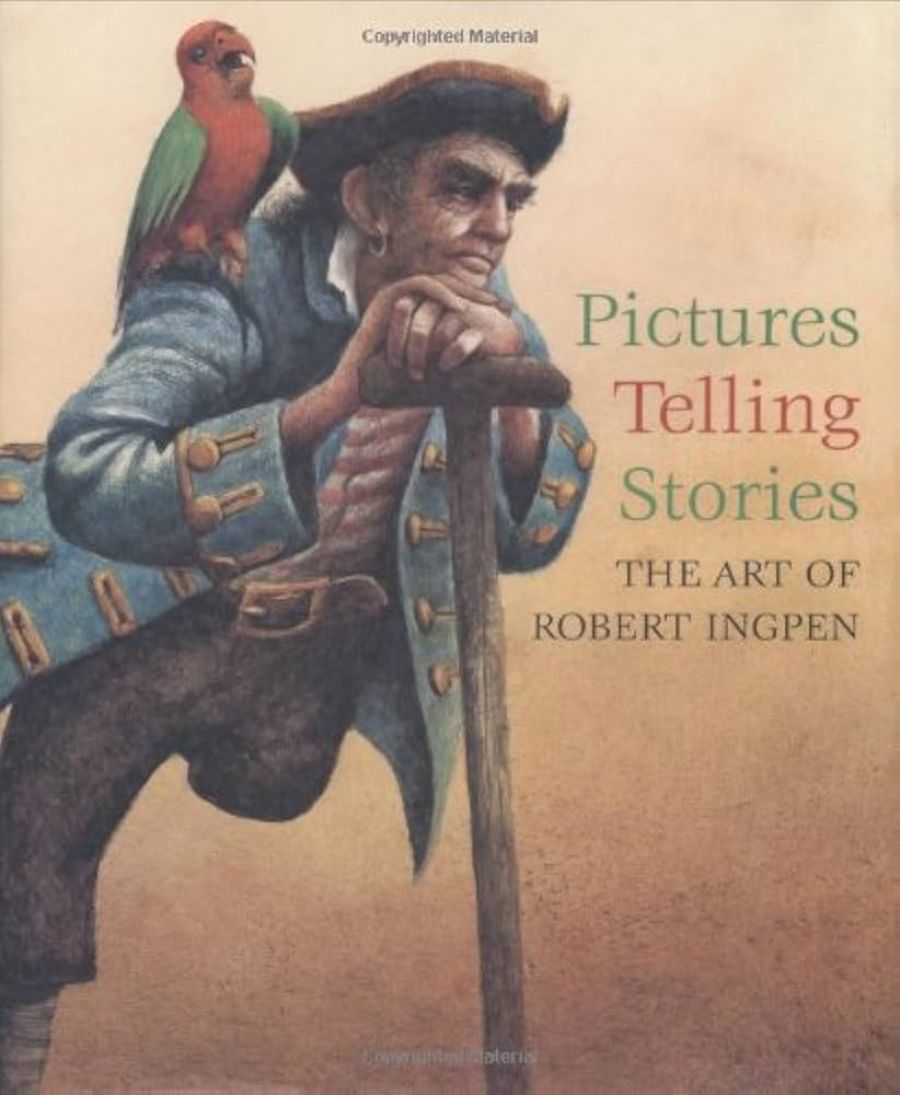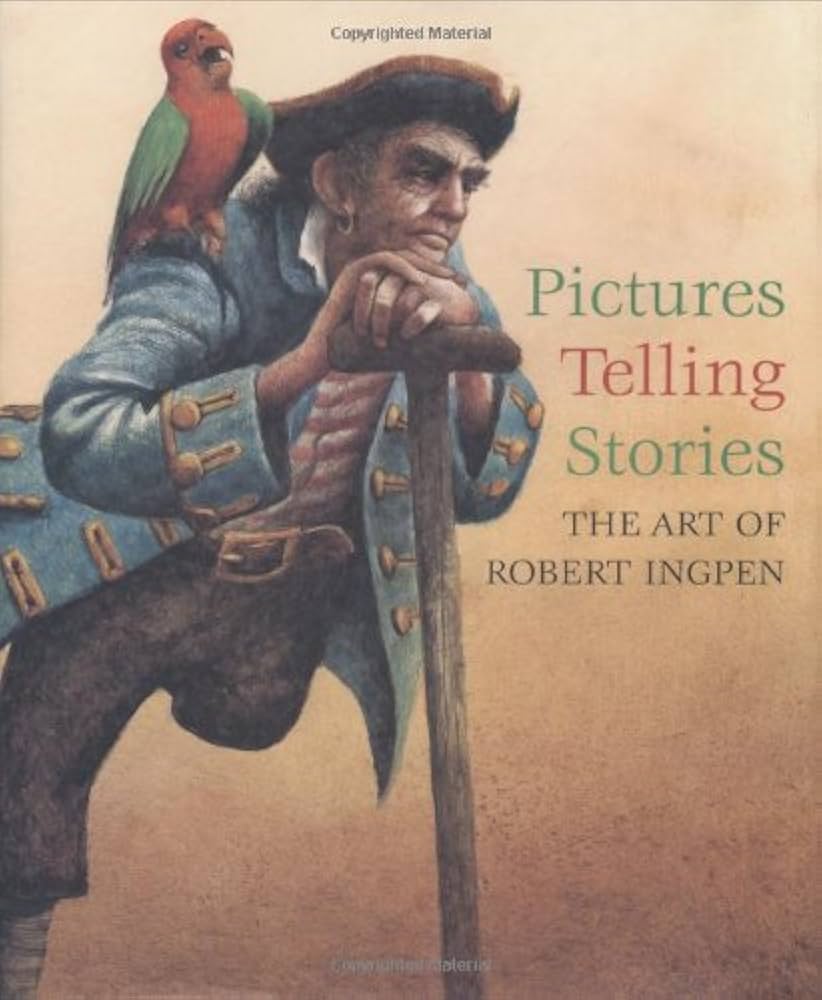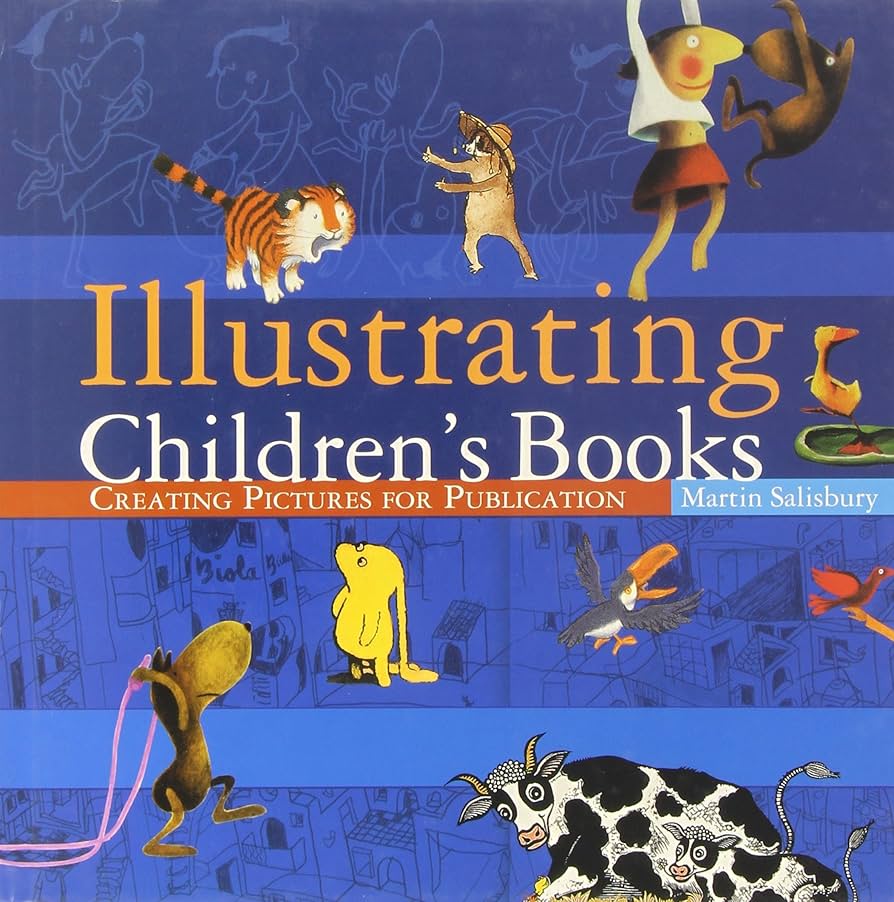
- Free Article: No
- Contents Category: Picture Books
- Review Article: Yes
- Article Title: Just Looking
- Online Only: No
- Custom Highlight Text:
Robert Ingpen is one of Australia’s best-known and most distinguished artists. Throughout his long career, he has illustrated scientific publications and numerous books for children and young people. He is the only Australian illustrator to have been awarded the prestigious Hans Christian Andersen Medal for Children’s Literature. He has designed bronze doors, stamps, and murals, and has acted as designer for Swan Hill Pioneer Village, one of Australia’s first open-air museums. His recent work includes the design of a tapestry celebrating the sesquicentenary of the Melbourne Cricket Ground; illustrating a centenary edition of Peter Pan and Wendy; and holding an exhibition at the 2002 Bologna Children’s Book Fair.
- Book 1 Title: Pictures Telling Stories
- Book 1 Subtitle: The art of Robert Ingpen
- Book 1 Biblio: Lothian, $39.95 hb, 112 pp
- Book 1 Cover Small (400 x 600):

- Book 1 Cover (800 x 1200):

- Book 2 Title: Illustrating Children's Books
- Book 2 Subtitle: Creating pictures for publication
- Book 2 Biblio: Allen & Unwin, $35pb, 144 pp
- Book 2 Cover Small (400 x 600):

- Book 2 Cover (800 x 1200):

Pictures Telling Stories: The Art of Robert Ingpen started its life as a catalogue of that exhibition and will be a revelation to anyone who has not seen his work in a while. Ingpen’s sense of place has always been the most distinguished characteristic of his art. He refers to it in the text as ‘just enough detail about the setting and casting of a story ... while leaving out enough detail for readers to use their imaginations and make the story their own’. The late-night demolition of an Elizabethan theatre, the magnificent Tower of Babel and a photo-ghostly Model T Ford production line are standout examples of this. His illustrations of children’s literature, including a superb story map of Alice’s Adventures in Wonderland, are to be pored over. The layout of the book has ensured that the exhibition experience is simulated: the only false note here is the reproduction of the MCG tapestry, which does not do it justice. The commentary by Sarah Mayor Cox consists largely of transcriptions of extrapolations by the artist that extend the original captions.
There are four stated intentions for the book. Firstly, through captions and essays, to illustrate the thought processes behind particular illustrations. Secondly, to invite or encourage young artists to consider a career in illustration rather than fine art. (Moaning about the deplorable state of current art training seems to be the only point made in the text to support this argument.) Thirdly, for teachers working with students to help them understand how illustrations can be used to bring literature of all kinds to life. Lastly, to explore how pictures tell stories: pictures of the narrative kind that have come to be associated with children’s and young adult literature.
Overall, Pictures Telling Stories speaks as if written for students and teachers. Descriptions of text and illustration as wrappings for narrative, both fiction and non-fiction; injunctions on how to read his drawings and simple background information to characters and events all point to this being the book’s primary purpose. The book is padded with a long quote from a book written about the artist in 1970; this had the useful effect of making me look again at his earlier work.
Martin Salisbury's book, originally published in the UK, was written specifically to encourage young artists to embrace the ‘profound and innovative creative endeavour’ possible in children’s books.
Salisbury writes as an instructor and practitioner, and his narrative is very much teacher to novice. The chapters ‘Drawing Techniques’, ‘Media’, ‘Character Development’, ‘Design and Topography’ and ‘Getting Published’ are assured and technical in their language. These chapters have good practical pointers, and I am sure publishers will be glad of the advice. Case histories of individual contemporary picture-book artists are spread throughout the book, and Salisbury’s commentary is pithy and informative. Salisbury’s inclusion of a brief history of illustrated books for children is necessarily brief but has enough errors to show his sloppy research. Maurice Sendak is much admired by Salisbury and mentioned several times, but his In the Night Kitchen was published in 1970, not 1964, and it did not transform the ‘American picture book scene’: I believe that was Where the Wild Things Are (1963). Salisbury’s opinions and half-truths about contemporary children’s literature, presented as accepted theory, persist throughout the book, marring it for me. There is a bibliography, however, which will help interested students. It was with desperation that I fruitlessly searched the text on my second and third readings for the suggestion that you should have a story idea worth sharing, or that that story could and should be tested on your target audience. We writers are a prickly lot.


Comments powered by CComment